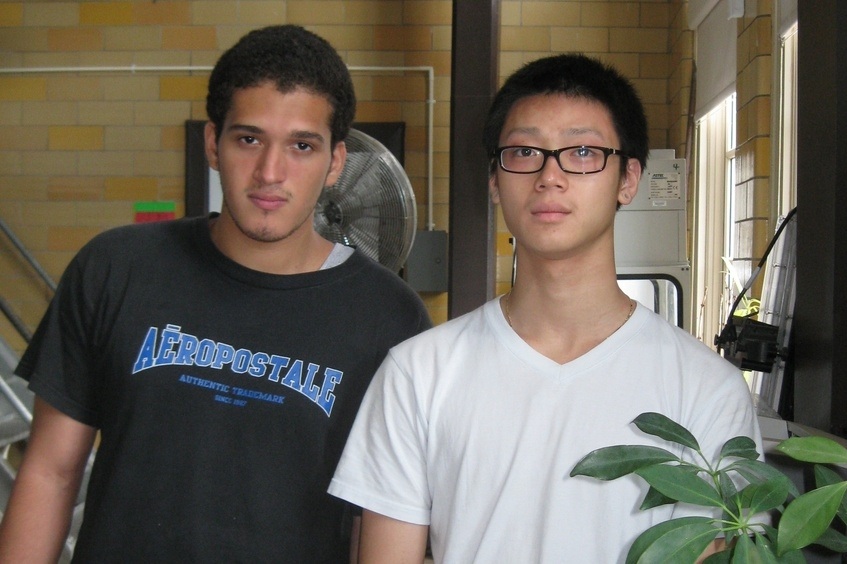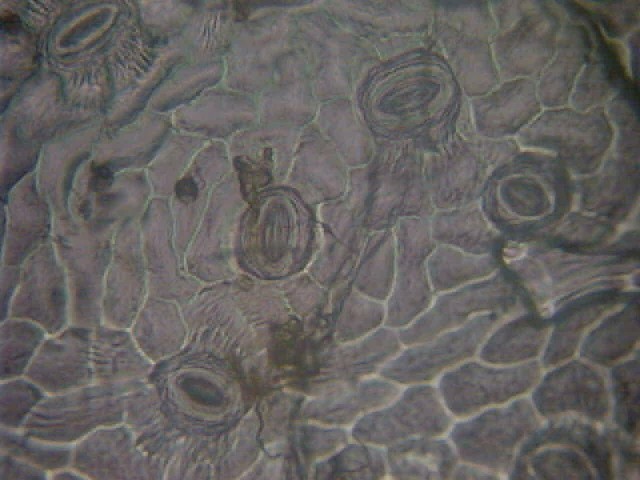Originally published on Turnstylenews.com, a digital information service surfacing emerging stories in news, entertainment, art and culture; powered by award-winning journalists.
By: Elias De Leon and Brian Zhou

The authors, Elias De Leon and Brian Zhou, in their classroom laboratory at Brooklyn Technical High School
Sometimes you achieve something that's significant only to the few people who know just how hard a thing it is to do. In our case, the thing that was hard to do was also hard to see. But in the end -- on our second-to-last day of school in June, as our classmates signed yearbooks and talked about summer plans -- we did see it. There it was, like a tiny, open mouth calling at us through the microscope. A stomate.
Stomates are tiny holes on the underside of leaves that allow plants to exchange gases with the air around them - exhaling oxygen and water vapor and inhaling carbon dioxide. They're as common to plants as mouths are to mammals. Only more so, since a single leaf can contain hundreds of thousands of stomates. But what was so uncommon about the stomates under our microscope was their age: about 15 million years old.

The stomates of a red maple leaf at 400x magnification
Also unusual in this context is our age. We are both teenagers, recently graduating seniors at Brooklyn Technical High School where this past school year we took a class called Environmental Inquiry. Neither of us had much hands-on research experience, but with the guidance of our teacher, John Cunningham, our study is truly cutting-edge. It may even help to advance the emerging field of paleoclimatology.
A big part of studying global warming is comparing today's climate to that of the past. If you've ever seen the movie An Inconvenient Truth, you'd recognize a chart that shows how carbon dioxide (CO2) levels in the atmosphere have fluctuated along with global temperatures. You may recall that climatologists got those historic CO2 measurements from bubbles of air trapped in the ice of very old glaciers. But those ice core samples go back only 650,000 years. What we're trying to do is extend that timeline much further back into the past.
In theory, our experiment is easy to grasp. Researchers have evidence that, for many plants, the number of stomates per leaf changes in response to how much carbon is in the air. By comparing modern leaves to leaves preserved in 15-million-year-old clay deposits, we can estimate how much CO2 was in the air when the ancient leaves were alive. It's like solving a simple algebra problem.
More Info:
Youth Radio Investigates is an NSF-supported science reporting series in which young journalists collect and analyze original data with professional scientists, and then tell unexpected stories about what they discover.
Related posts: